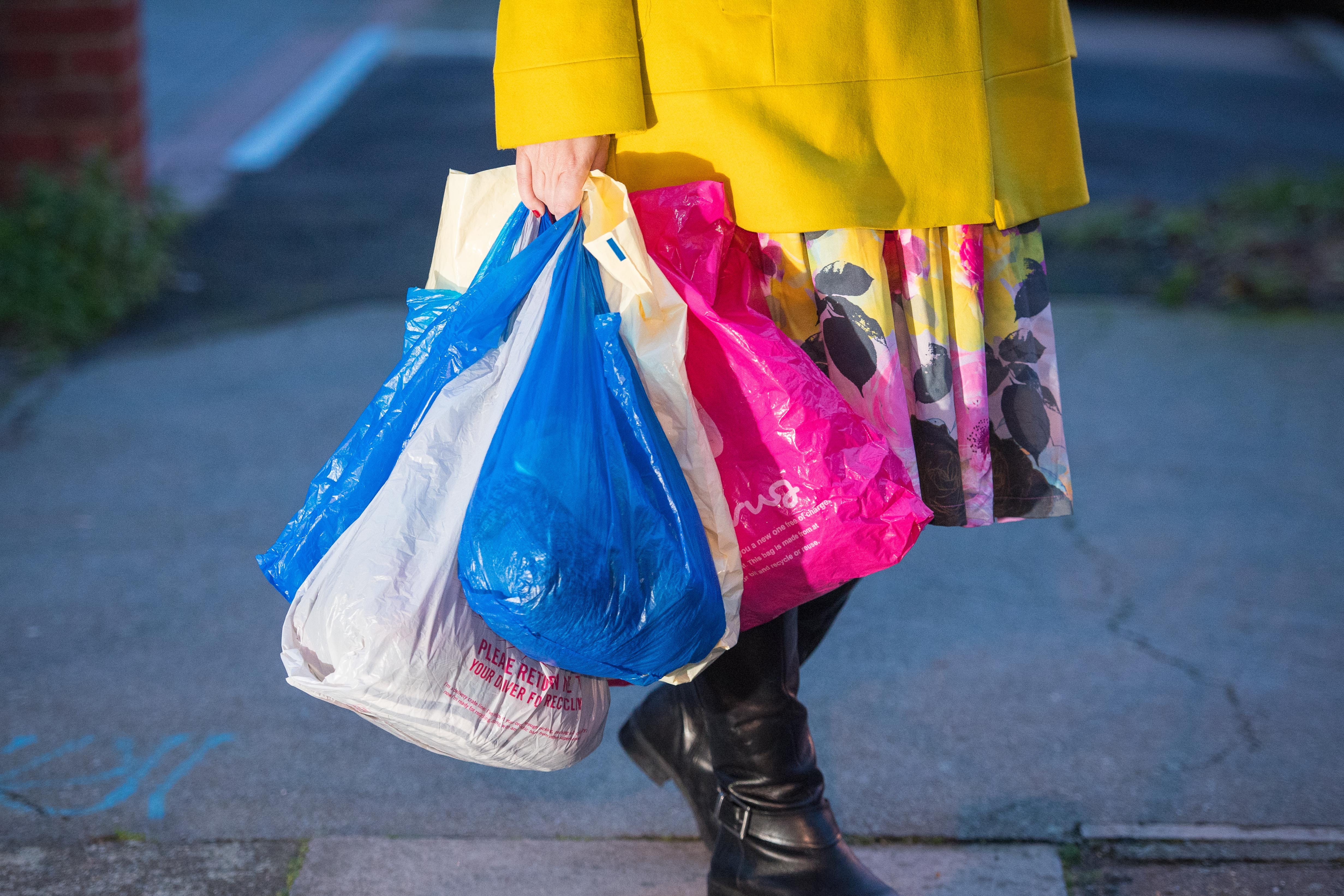Police-recorded shoplifting offences in England and Wales hit new 20-year high
A total of 443,995 incidents were logged in the year to March.

The number of shoplifting offences recorded by police in England and Wales has risen to a new 20-year high.
A total of 443,995 offences were logged by forces in the year to March 2024, up 30% on the 342,428 recorded in the previous 12 months.
The figure is the highest since current records began in the year to March 2003, according to the Office for National Statistics (ONS), which described the latest increases as notable.
Shoplifting levels had already reached a 20-year high earlier this year, with the latest figures showing the number of offences recorded has now risen even higher.
The figures also show the number of offences involving theft from the person stood at 131,453 in 2023/24, up 17% from 112,225 in 2022/23.
The data published on Wednesday comes in the wake of major retailers raising concerns about the rising cost of theft, and as the new Labour Government vowed to tackle low-level shoplifting and make assaulting a shop worker a specific criminal offence.
The move to create a separate offence follows a long-running campaign from business owners and Conservative backbencher Matt Vickers amid rising violence against retail workers.
Retailers have said they hope the measures set out last week in the King’s Speech to Parliament will make it easier for police to investigate and prosecute criminals.
Of the 417,582 police-recorded shoplifting offences in England and Wales in 2023/24 that were assigned an outcome, 17% (71,741) were charged or summonsed while 58% (243,297) of the investigations were closed with no suspect identified, according to Home Office data. This compares with 16% and 55% respectively in 2022/23.
Association of Convenience Stores chief executive James Lowman said it is “no surprise” that shoplifting levels continue to rise as the official figures represent “just a fraction of the levels of theft that are happening in convenience stores and other retail outlets on a daily basis”.
“The gangs that are committing the majority of these crimes against retailers are typically organised, stealing to fund other criminal activity or drug and alcohol habits. They are often stealing to order, targeting higher-value items to sell on to normal people who are struggling with the cost of living.
“These thieves are stealing on a regular basis without fear of apprehension, so it’s essential that every police force in the country takes theft seriously, not least because challenging thieves is one of the biggest triggers for abuse of shopworkers,” he added.
Home Secretary Yvette Cooper blamed the figures on “the disgraceful dereliction of the last Tory government on law and order” as she promised changes under Labour.
She said: “We can’t carry on like this. This Labour Government will put neighbourhood police back on the beat in our town centres, with stronger laws on knife crime, shoplifting and assaults on shop workers to keep our communities safe.
“Labour has set an unprecedented mission to halve serious violence in 10 years and to restore confidence in policing and the criminal justice system. We will be a Government of law and order that puts the safety and security of our communities at its heart.”
Superintendent Andy Sidebotham, from the College of Policing, said: “Police now prioritise attending thefts where the offender has been detained by store staff, where violence has been used, or where evidence like CCTV is available.
“There is also an increased focus on giving businesses a voice in the criminal justice process through impact statements, and explaining to prosecutors and courts how retail theft is affecting them and their customers.
“We recognise shoplifting is of major public concern, and that’s why we’ve boosted our guidance, provided additional support, and are clear on the investigative standards expected. There is more to do, and we will continue to focus attention on this crime.”
We can’t carry on like this ... We will be a Government of law and order that puts the safety and security of our communities at its heart
According to the ONS figures, the number of robberies recorded rose by 8% to 81,019in the year to March, up from 75,012 in the previous 12 months – though this remains below pre-pandemic levels, with 90,198 offences in the year to March 2020.
The number of knife crime offences recorded by police forces in England and Wales in 2023/24 stood at 50,510, up 4% from 48,409 in 2022/23, but below the pre-pandemic level of 51,982 offences in 2019/20.
There was a “notable increase” in the number of robberies involving a knife or sharp instrument, with 21,226 recorded by forces in 2023/24, up 13% from 18,787 in the previous 12 months, though this is below the 22,727 in 2019/20.
Offences involving possession of an article with a blade or point fell slightly to 27,470, down 3% from 28,391 in the previous 12 months.
We recognise shoplifting is of major public concern, and that’s why we’ve boosted our guidance, provided additional support, and are clear on the investigative standards expected. There is more to do, and we will continue to focus attention on this crime
This follows “substantial increases in recent years, which may have been influenced by targeted police action to tackle knife crime”, the ONS said.
But the figures on knife crime do not include offences recorded by Greater Manchester Police due to problems recording data.
Separate Home Office figures show the proportion of investigations into crimes recorded by police in the year to March which were closed with no suspect identified rose to 40.2%, up from 39.3% in the previous 12-month period.
The proportion of suspects being taken to court stood at 6.4%. In rape cases this was 2.6%. These are both slight increases on the previous period (5.7% and 2.1% respectively) but still among the lowest levels recorded.
Bookmark popover
Removed from bookmarks